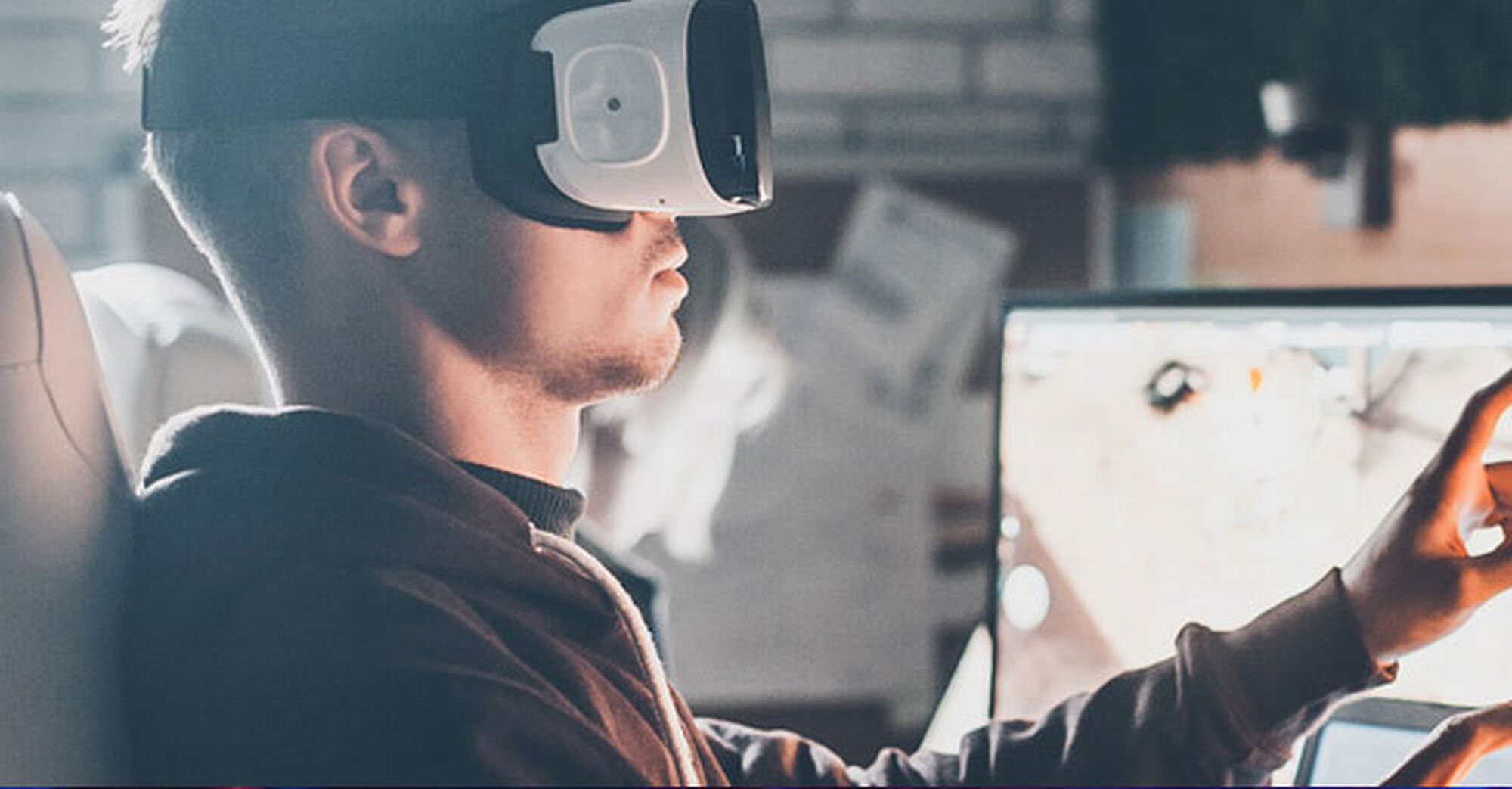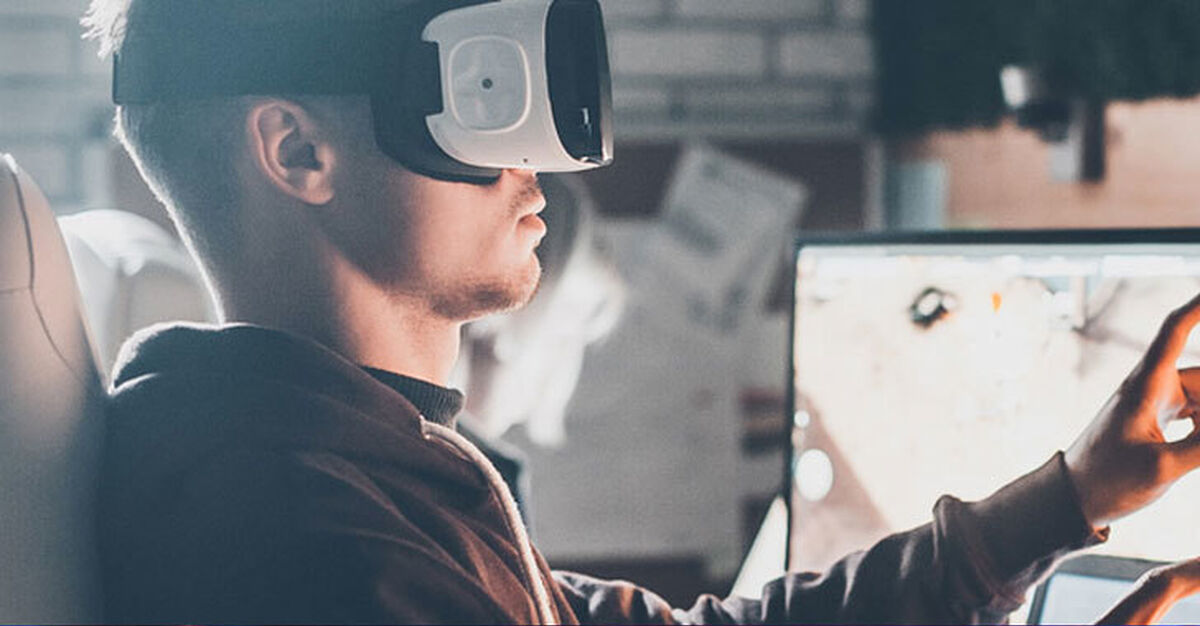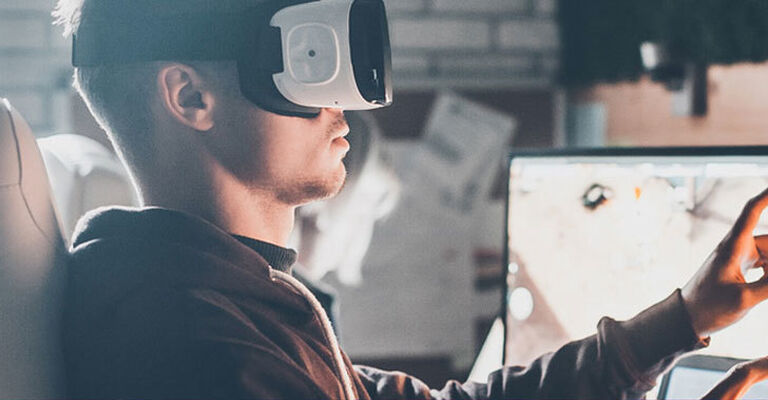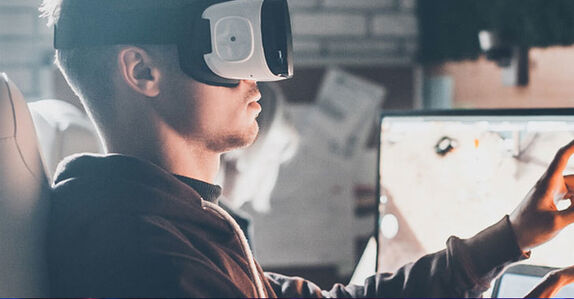Next-generation Augmented Reality and Virtual Reality are creating the next big step-change in consumer technology. Driven by platforms that immerse and transport us, augment and assist us, it’s going to be huge!
What’s more, these technologies are likely to become a huge part of the brand and marketing landscape as new media surfaces and content delivery channels. They may seem a long way from the tech we use in today’s daily brand-building, but the new reality is arriving increasingly quickly.
Brands that genuinely begin to explore these channels now will be best placed to use them effectively as they become mainstream.
Which reality?
It’s easy to get lost in acronyms, so let’s demystify these technologies by thinking about the experiences they provide. Both of them use some kind of screen or lens to present the viewer with an image of a world they can interact with. And both use some kind of location and orientation technology to dynamically adjust the viewer’s image.
In the case of Virtual Reality, the generated image is all the viewer sees, so they’re fully immersed in a virtual world. Augmented Reality adds the generated image onto a view of the real world. They both perform the same technological trick, but VR offers a more immersive experience whereas AR creates a more integrated overlay to the real world.
What’s going mainstream?
Is one technology going to emerge as the leader in mainstream consumer experience? Make no mistake, VR and AR are both set to be big. Analysts and investors are placing bets on the total market being worth around $150 billion by 2020. For comparison, that’s slightly bigger than the gaming market and dwarfs the forecast for the wearables market.
These numbers paint a picture of Virtual Reality as smaller and more niche compared to the larger and more mainstream Augmented Reality. VR is set to become a $30b market — with an emphasis on VR gaming — while AR could become $120b — focused on commerce and data.
As a fully immersive experience, VR is likely to appeal to a home-based audience attracting current console gamers and movie goers. AR has greater potential to become a future handset feature, and in more distant scenarios could replace the handset altogether.
Both markets are massive but it’s hard to argue against the more subtle, nuanced experience of AR becoming the more adopted technology — even though VR is being talked about most. That’s where it gets interesting for brands. Will AR become the next handset, media surface and interface into content? It looks distinctly possible.
Sooner rather than later
In a technology-led environment, the market-readiness of next-generation AR hardware innovations will accelerate adoption so it’ll be here before we know it. Previously fanciful experiences are becoming normalised, and the technology is there, so the stage is set for mainstream adoption.
Pokemon Go has just set the bar in terms of amass adoption into consumer consciousness. Once the next-generation technology arrives, AR is surely going to take centre-stage in a whole range of consumer experiences.
We won’t have to wait for Microsoft HoloLens to hit Amazon, or Magic Leap to release a piece of consumer hardware, to see a mass audience having access to next-generation AR tech. Google Tango is being integrated into a mass-market consumer product, with Lenovo recently announcing their first Tango-enabled handset. While Tango looks like a standard AR experience, it’s a significant innovation in making it work smoothly with the rest of the world.
Tango senses 3D space and learns about the environment, combining what the handset ‘sees’ with what it ‘feels’ through accelerometers. It learns about a place or space and overlays content seamlessly, without traditional proximity cues like markers and beacons.
But the changes we’re seeing aren’t purely driven by Silicon Valley, there’s plenty of evidence of a huge appetite among consumers. Immersive VR experiences like The Void are generating huge amounts of consumer buzz, consumers are citing VR as a key influencer in buying decisions and Pokemon Go has already become the biggest mobile game ever in the US. People are readily adopting AR and VR, and savvy brands will want to make the most of these new opportunities.
The importance of design
In a market dominated by technology it’s easy to lose track of the value of design, but it’ll play an important role in helping brands make the best use of the platforms. Without design thinking, stories may be left untold, communication will lack clarity and experiences could lose human meaning. Design will touch almost every aspect of communication in Augmented and Virtual Reality worlds.
So, what should brands be thinking about making on these platforms? Content that helps customers experience products before they buy will help decision making. You’ll be able to really get a feel for a car’s interior, explore an off-plan apartment in a co-living complex or imagine what a certain chair might look like in your living room. Instructional or assistive content augmenting product unboxing will help people learn how to use them. Here, AR could significantly impact the overall customer experience and help people to fully explore a brand’s products.
Like the web on laptop and responsive web on handset, one of the most used avenues of design thinking will be making content specifically to sit within a new augmented media layer — one that’s on-call and three-dimensional. Imagine the future of the ski map, the museum guide or editorial content. Microsoft is already optimising Outlook and Calendars for a holographic interface and patenting haptic feedback for interaction, so the stage is really being set for the next design layer being holographic.
Start inventing, start now
With so much potential opportunity, how can you prepare for these technologies hitting your brand space?
Access to the leading platforms is exceptionally limited (Magic Leap being one of the most secretive and inaccessible), but that shouldn’t delay the ambition to innovate. Smart designers and brands are already inventing and exploring in their own way, and with a bit of thought, you can join them.
Prototyping using current tech is a great way of envisioning the future — four years ago we were prototyping in-store experiences for Timberland using AR. We’ve recently been conducting our own R&D projects which explore VR as a medium for storytelling, and brands who see the potential are coming on board to develop experiences for the summer.
Ideas may not be the right tool for innovating within your brand. A research project to understand how your market might be impacted by the technology is another starting point, and one that could provide the insight and business case to kickstart an innovation.
A new reality
New technologies always present challenges around adoption and opportunity, ideas and ambition. These emerging reality platforms will drive the biggest shift in consumer technology since the smartphone changed how we access pretty much everything. The brands that succeed will use these technologies to inspire with ideas and stories that genuinely engage audiences, with a quality of execution to delight them.
Successful brands will also start thinking about how they use these technologies now. They’ll imagine, experiment, and innovate — and won’t be afraid to release early, to learn what works for their customers.









